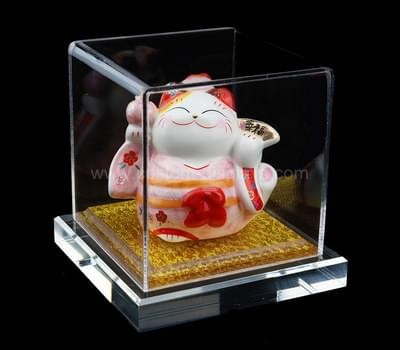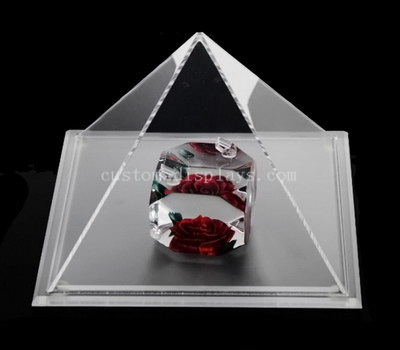In the realm of cultural artifact display, the preservation and presentation of delicate items are of paramount importance. Acrylic boxes have emerged as a popular choice for collectors and curators alike, offering a blend of aesthetics and functionality that enhances the display while providing essential protection. This article delves into the protective role of acrylic boxes in safeguarding and showcasing the beauty of cultural artifacts.



Acrylic, or PMMA (polymethyl methacrylate), is a versatile material known for its clarity, durability, and resistance to impact. When crafted into boxes, it offers a transparent barrier that shields artifacts from environmental hazards without detracting from their visual appeal. The protective properties of acrylic are manifold, making it an ideal choice for the display of delicate items such as antique coins, stamps, and small sculptures.
One of the primary benefits of acrylic boxes is their ability to protect artifacts from physical damage. The material’s strength and impact resistance can prevent accidental bumps or falls from causing harm to the displayed items. Moreover, acrylic’s transparency allows for unobstructed viewing, ensuring that the artifacts remain the focal point of the display.
In addition to physical protection, acrylic boxes also serve as a barrier against environmental factors that can degrade the condition of artifacts over time. They protect against dust, which can scratch surfaces and dull finishes, and against moisture, which can lead to rust or mold. By controlling the microenvironment within the box, curators can maintain stable conditions that are less likely to cause damage.
Acrylic boxes also provide a measure of security for valuable artifacts. The material is difficult to break, which can deter theft or vandalism. Furthermore, many acrylic boxes are designed with locking mechanisms, adding an extra layer of security to high-value collections.
Another advantage of acrylic boxes is their adaptability. They come in a variety of sizes and shapes, allowing for customization to fit the specific dimensions of the artifact. This ensures a snug fit that provides additional protection without compromising on the display’s aesthetics.
In terms of aesthetics, acrylic boxes offer a sleek and modern look that complements a wide range of artifact styles. Their clarity allows the true colors and details of the artifacts to shine through, enhancing the viewing experience for visitors. This transparency also allows for the display of multiple artifacts within the same box, creating a visually cohesive collection.
In conclusion, acrylic boxes play a crucial role in the protection and display of cultural artifacts. They offer a durable and transparent barrier that safeguards items from physical damage and environmental factors while providing a visually appealing presentation. As the demand for effective artifact preservation continues to grow, the use of acrylic boxes is likely to remain a staple in the world of cultural artifact display.
